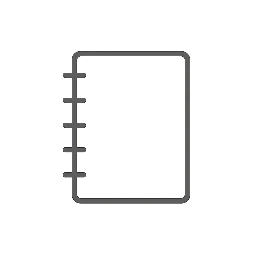Copper has become a key focus for investors due to its essential role in industries like electronics, construction, and renewable energy. As global demand rises and supply tightens, copper prices have seen significant increases in 2025. Investing in copper can provide exposure to a market driven by long-term economic and energy transition trends.
There are several ways to invest in copper, including purchasing mining stocks, ETFs, futures, or even physical copper. Each option carries different risks and potential rewards, making it important for investors to understand how copper markets operate. Those looking for growth often consider top-performing copper stocks or ETFs to gain diversified access to this metal.
With copper often seen as a barometer of economic health, its value can fluctuate based on global supply chains, geopolitical factors, and industrial demand shifts. This makes copper investing both an opportunity and a challenge for those seeking to add metals to their portfolios.
Understanding Copper as an Investment
Copper’s value is shaped by multiple factors such as global economic conditions, technological demands, and production trends. Investors must analyze these aspects carefully to gauge potential returns and risks associated with copper markets.
Market Dynamics and Price Drivers
Copper prices fluctuate based on supply-demand imbalances, geopolitical events, and economic growth indicators. Industrial demand, especially from construction, electronics, and renewable energy sectors, strongly influences price movements.
Speculative trading and inventory levels in major metal exchanges can also impact short-term price volatility. Additionally, currency strength—particularly the U.S. dollar—affects copper pricing since it is globally traded in dollars.
Investors should watch key economic indicators such as manufacturing output and infrastructure spending plans because they directly affect copper consumption.
Copper Supply and Demand Trends
Copper supply depends largely on mining output and recycling rates. Mining disruptions, labor strikes, or declining ore grades can reduce supply and push prices higher.
On the demand side, rapid growth in electric vehicles, grid modernization, and renewable energy projects are increasing copper consumption. These sectors require significant amounts of copper wiring and components.
Recycling plays an increasingly important role, easing supply constraints but also introducing variability based on scrap collection efficiency. Overall, copper demand is expected to remain strong due to its critical role in technology and energy transitions.
Risks and Volatility in Copper Markets
Copper investing carries risks including geopolitical instability in mining countries and regulatory changes affecting operations. Environmental concerns are also prompting stricter mining regulations, potentially limiting supply.
Price volatility is common due to copper’s sensitivity to economic cycles and global trade dynamics. Investors may face sudden price swings triggered by shifts in trade policies or monetary tightening.
Financial instruments like futures and ETFs add complexity, exposing investors to leverage and counterparty risks. Due diligence is crucial when selecting investment vehicles or companies tied to copper.
How to Invest in Copper
Investors can gain exposure to copper through multiple pathways that vary in risk, liquidity, and management complexity. Options include owning the metal directly, investing in funds tied to copper prices, buying shares of mining companies, or engaging in derivatives trading.
Physical Copper Investment Options
Physical copper can be purchased as bars, coins, or ingots, providing direct ownership of the metal. This method requires secure storage and insurance, which can add to the overall cost.
Investors holding physical copper avoid market counterparty risks but must consider the cost of transporting and verifying authenticity. Physical copper is less liquid compared to financial instruments, limiting the ease of quick sales.
This option suits those focused on long-term holding and diversification without exposure to company-specific risks. However, managing physical assets involves logistical challenges.
Copper Exchange-Traded Funds (ETFs)
Copper ETFs offer a way to invest in copper without owning the metal physically. These funds usually track copper prices or invest in a portfolio of copper mining companies.
ETFs provide liquidity and diversification, allowing investors to buy or sell shares on a stock exchange like regular stocks. They typically have lower entry costs and reduce storage and insurance concerns associated with physical copper.
However, investors should review expense ratios and understand whether an ETF holds physical copper or futures contracts. ETFs are generally considered a lower-risk entry point to copper investing.
Copper Mining Stocks
Investing in copper mining companies involves buying shares of firms engaged in copper extraction and production. These stocks can be impacted by copper prices but also by company-specific factors like management effectiveness, cost structures, and geopolitical risks.
Mining stocks provide potential for dividends and capital appreciation but carry risks tied to operational and regulatory issues in mining regions.
It’s important for investors to analyze financial health, production capacity, and project pipelines of companies before investing. Mining stocks offer indirect copper exposure with added corporate risk.
Futures and Derivatives
Copper futures contracts allow investors to buy or sell copper at a predetermined price on a future date. This method is often used by traders for speculation or hedging by producers and consumers.
Futures require understanding of margin requirements and can involve high volatility and leverage, increasing risk.
Other derivatives, such as options and contracts for difference (CFDs), provide additional ways to gain exposure but also demand active management and risk tolerance. These instruments suit experienced investors familiar with commodities trading.









Leave a Reply